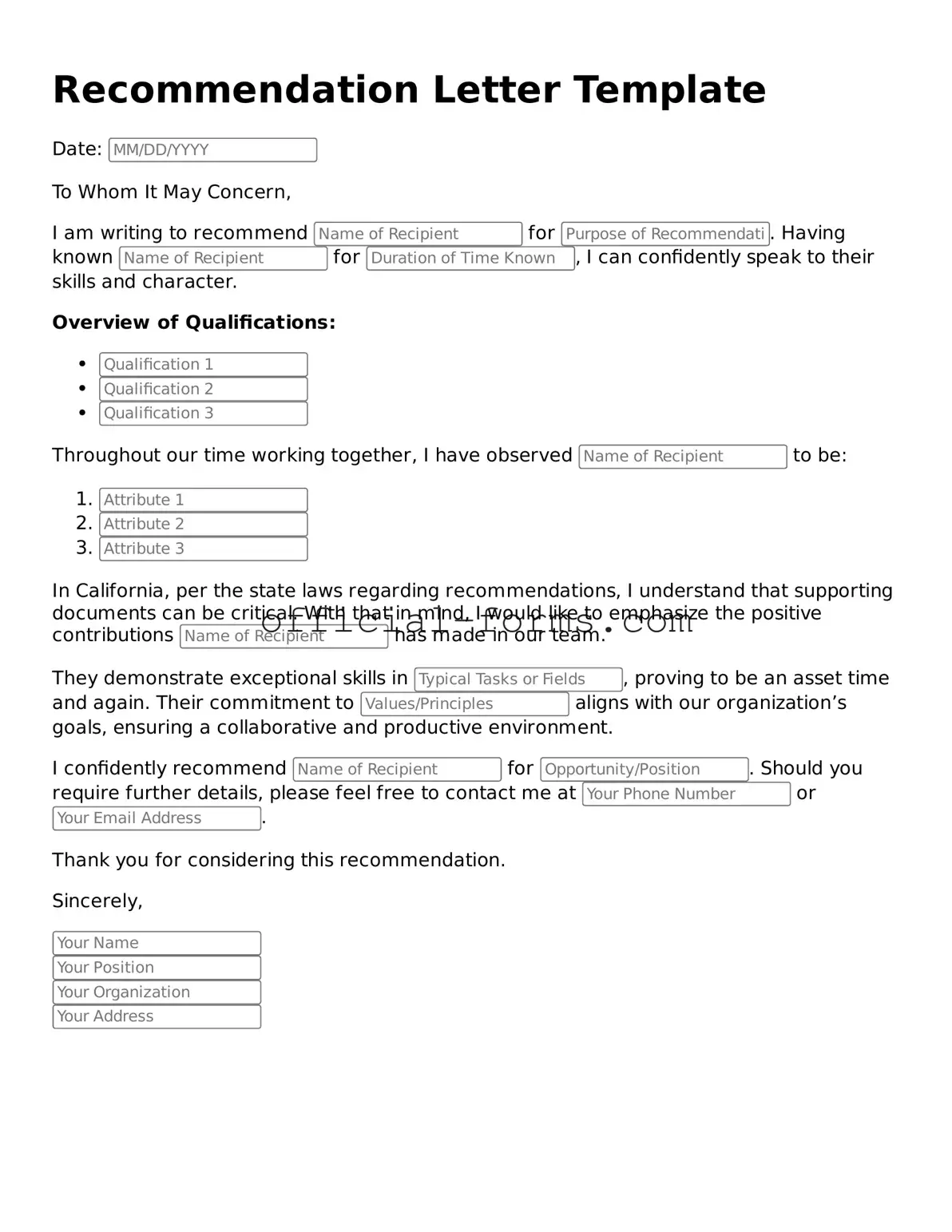When filling out a Recommendation Letter form, many individuals encounter common pitfalls that can undermine the effectiveness of the letter. One frequent mistake is failing to provide specific examples of the candidate's achievements. Generic statements do not paint a vivid picture of the individual’s capabilities. Instead, detailed anecdotes about skills and accomplishments can greatly enhance the letter's impact.
Another error is neglecting to tailor the letter to the specific opportunity or position. A one-size-fits-all approach often leads to vague endorsements that do not resonate with the reader. Customizing the content to align with the job or program requirements shows genuine support and understanding of the candidate’s goals.
In addition, some people overlook the importance of using a professional tone throughout the letter. Informal language or overly casual phrasing can diminish the letter’s credibility. Maintaining a respectful and formal tone helps convey the seriousness of the recommendation.
Omitting the candidate’s full name and relevant contact information is another common mistake. This detail is essential for the recipient to identify the candidate easily and reach out if further information is needed. Including this information ensures clarity and professionalism.
Another frequent error involves failing to proofread the letter. Spelling and grammatical mistakes can detract from the overall message and reflect poorly on both the writer and the candidate. Taking the time to review the document can prevent these easily avoidable errors.
Some recommenders also make the mistake of being overly enthusiastic without providing substance. While it’s important to convey support, excessive flattery without backing it up with examples can come across as insincere. A balanced approach that highlights strengths while remaining credible is crucial.
Additionally, neglecting to mention the relationship between the recommender and the candidate can weaken the letter. Providing context about how long and in what capacity the recommender knows the candidate adds weight to the endorsement. This background helps the reader understand the basis for the recommendation.
Finally, failing to meet submission guidelines can lead to missed opportunities. Each institution or employer may have specific requirements regarding format, length, or submission methods. Adhering to these guidelines is essential for ensuring that the recommendation is considered.
